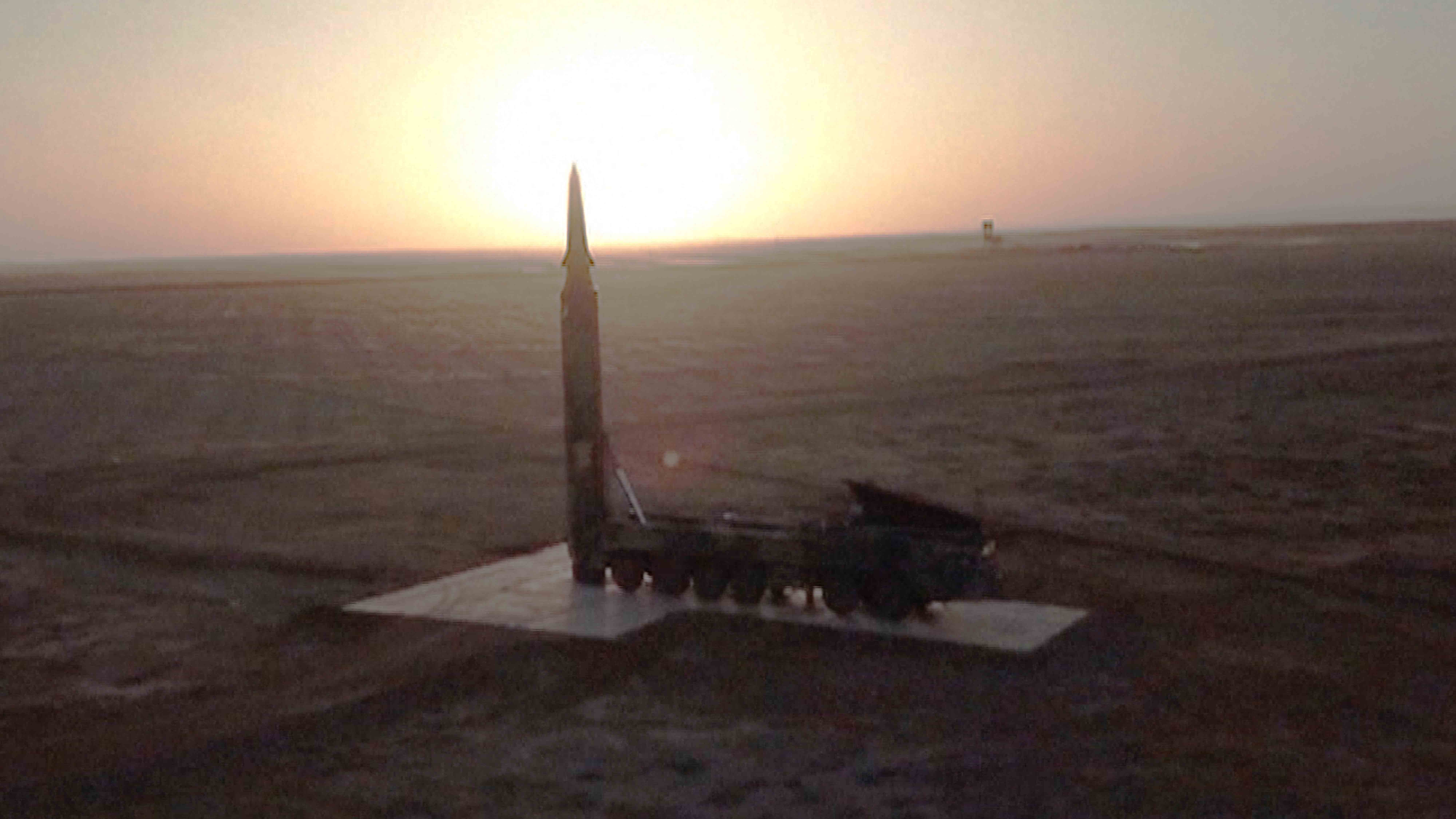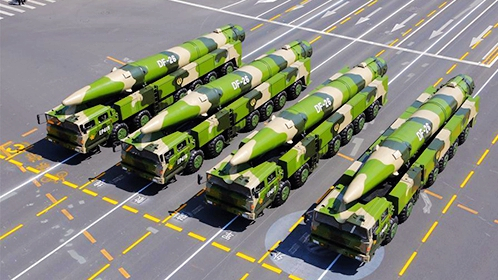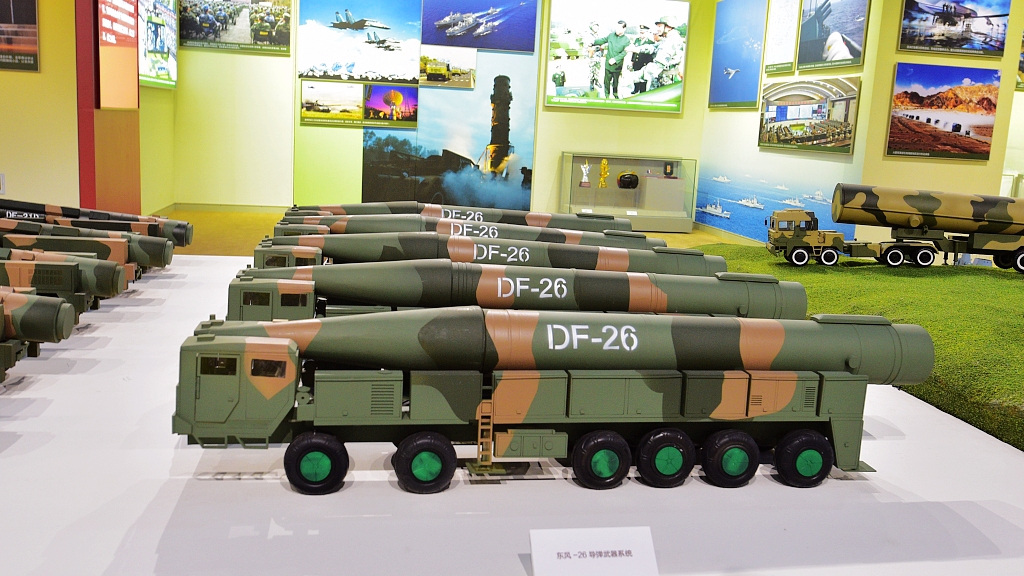
Asia Pacific
15:58, 30-Jan-2019
Chinese military launches DF-26 missiles dubbed as 'Guam killer'
By Abhishek G Bhaya
01:13

A missile unit of the Chinese People's Liberation Army (PLA) Rocket Force has successfully launched two missiles, identified as DF-26, in a recent combat exercise in northwest China's desert region, video footage released by CCTV showed.
While the CCTV report didn't name the missile, Global Times identified it as a DF-26 intermediate-range ballistic missile, which has been described as a "Guam killer" by international media owing to its 4,500-kilometer range, giving it the ability to reach U.S. military bases on the Pacific island of Guam.
This is the first time the launch of a DF-26 missile and detailed videos of its appearance have been made public.

DF-26 missiles are seen during a military parade in Beijing, China, September 3, 2015. / Xinhua photo
DF-26 missiles are seen during a military parade in Beijing, China, September 3, 2015. / Xinhua photo
The launch also came days after the U.S. guided-missile destroyer, USS McCampbell, carried out a “freedom of navigation” operation by sailing within 12 nautical miles of the South China Sea, a move that was strongly denounced by Beijing.
Warning the U.S. to refrain from undertaking such "provocative action," China's Foreign Ministry spokesperson Lu Kang earlier this month asserted that "China will continue to take the necessary measures to defend its national sovereignty and security."
Some international media have questioned the DF-26's ability to hit a moving vessel, saying China had never practiced attacking such a target, but the latest missile launch demonstrated its full capability, Global Times stated citing experts.
'Testing combat capabilities'
The CCTV report meanwhile described the missile launch in details. Despite the harsh geographical conditions, low temperature and sandstorms on the highland, the officers and men successfully launched two new-type missiles, the report stated.

A screen grab from the CCTV video shows a unit of the PLA Rocket Force taking part in a recent military drill in northwest China's desert region. /CGTN Photo
A screen grab from the CCTV video shows a unit of the PLA Rocket Force taking part in a recent military drill in northwest China's desert region. /CGTN Photo
To enhance the troop's emergency response capacity, the commander sent several launching units with military equipment to different positions. All units carried out launching preparations at the same time, and got ready for the firing. At the last moment, the commander gave orders to a random unit to fire, it added.
"All the launching units were put in place and only our unit was lucky enough to be picked to fire and launch the missiles," Cui Chengxin, deputy company commander, told CCTV.
After the first launch, the unit was ordered to launch another strike for which the soldiers had to move to another position swiftly and replenish ammunition in a timely manner, the report said.
"The field training was conducted with the requirements for real combat and we have further subdivided it into finer segments according to the complicated conditions of the future battlefields and organized action according to subjects and targets to test the real combat capabilities of the unit," Jing Xiaopeng, deputy commander of the unit, told CCTV.
The report further stated that during the drills, the unit also carried out trans-regional, long-time, high-intensity and multiple-situation training to raise the unit's quick response abilities and their sustainability in combat.
"We have brought the troops to the harshest environment for training in that we want them to hone on their skills that are best coping with the dangerous and difficult environment so as to really realize the best integration between man and equipment," Yao Wenshan, commander of the unit, told CCTV.
'Special design'

Models of DF-26 missiles on display at an exhibition in Beijing, China, September 26, 2017. /VCG Photo
Models of DF-26 missiles on display at an exhibition in Beijing, China, September 26, 2017. /VCG Photo
Citing the CCTV footage, Global Times noted that the nose of the missile has a double-cone structure with four fin-like flight control surfaces symmetrically built around the base of the warhead.
The special design enables the missile to accurately control the attack trajectory, as the four flight control surfaces provide super maneuverability and guide the warhead during the terminal stage to hit a slow-moving aircraft carrier, military expert Song Zhongping told Global Times.
Song, who used to serve in the Second Artillery Corps (now the Rocket Force) of the PLA, said the double-cone structure provides the missile with increased targeting capability, speed, and stealth, making it more difficult to intercept.
Global Times also reported that "an information network connected to the warhead, which possibly includes satellites, ground and naval radar in addition to radar on the missile itself, will constantly update the location of a moving target, informing flight control where to guide the missile," citing a Beijing-based military expert who requested anonymity.
Chinese Ministry of National Defense last year said that the DF-26 missiles are already in service with the PLA Rocket Force. The missile can carry conventional or nuclear warheads and is capable of launching precision strikes on land targets or medium and large vessels at sea, said ministry spokesperson Wu Qian to the media last April.

SITEMAP
Copyright © 2018 CGTN. Beijing ICP prepared NO.16065310-3
Copyright © 2018 CGTN. Beijing ICP prepared NO.16065310-3